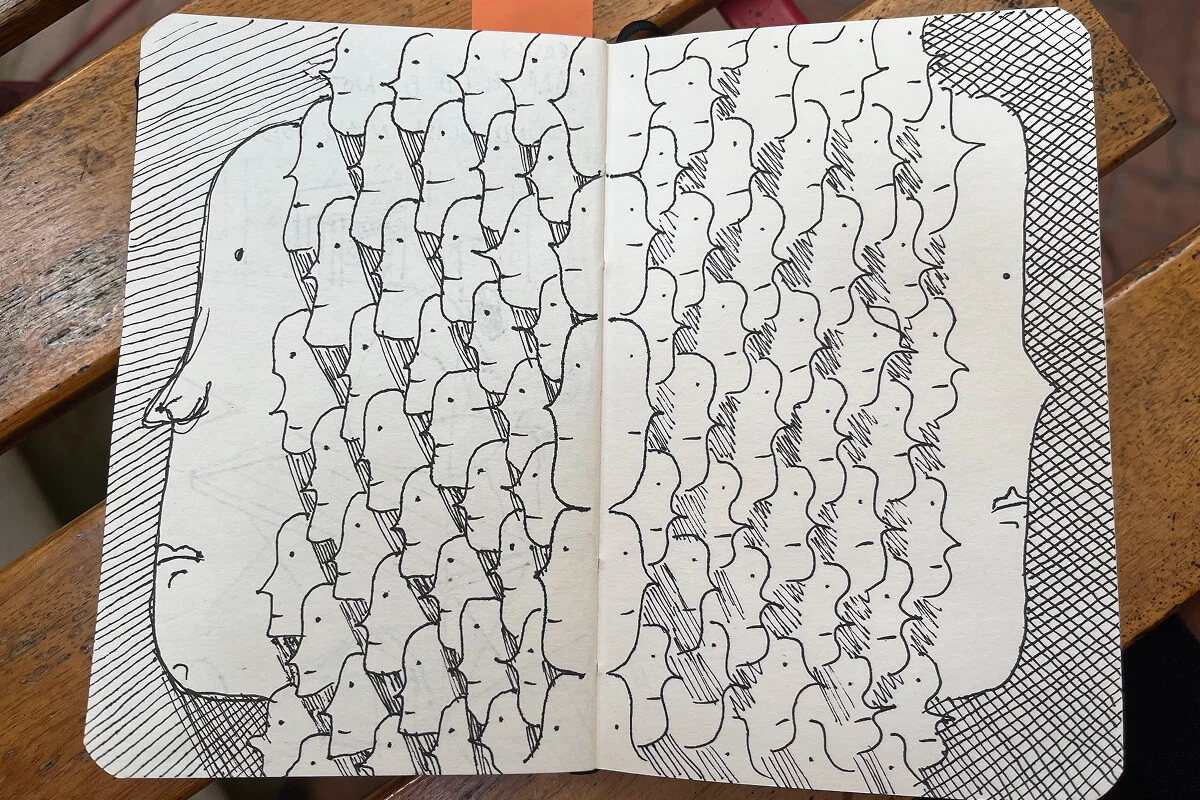After grounding your audience in the reality of their Ordinary World, the next step is to gently awaken the possibility of change.

Welcome to Stage 2 of 12 in the Hero’s Journey Framework — a series helping you build story-aligned brands, offers, and content that actually connect.
Stage 2 is where you invite them to imagine something more. Not about pushing an offer or amplifying pain, but about creating an opening. A sense that what they’re feeling isn’t all there is, and that something better, more aligned, more spacious might be possible. This is where curiosity stirs, momentum begins, and the story starts to shift.
Once your audience feels seen in their Ordinary World, it’s time to open them up to the possibility of change.
Stage 2 is where momentum begins to build up. Your audience starts to imagine something more by showing them a glimpse of what’s on the other side of the journey. A soft push into motion.
What is the Call to Adventure?
In storytelling, the Call to Adventure is the invitation to leave the familiar behind.
Sometimes it arrives as a whisper. Sometimes as a rupture. But always, it signals:
What if things didn’t have to be this way?
What if you didn’t have to keep saying yes to draining client work just to stay afloat? What if you could stop second-guessing your voice, your offer, your next step? What if your brand, your content, your rhythm actually felt like you instead of a formula you’ve been told to follow?
The Call to Adventure is a doorway that invites your audience to imagine something different, and begin moving toward it.
Why It Matters in Your Message
People don’t change because they’re told to. They change when they sense something better is possible.
This stage is about sparking that feeling. Not by offering answers, but by naming what they want and what’s been missing.
Without the Call to Adventure:
“Join the program and unlock your creative potential.”
With the Call to Adventure:
“You’ve been walking the path others laid out for you — and it’s starting to feel tight. What you really want is clarity, creative space, and a way of working that feels honest, energizing, and fully your own.”
The second line speaks to possibility — and that’s what makes people lean in.
How to Use It in Your Brand
Where to use it:
- Right after naming their Ordinary World (website, sales page, video intro)
- Before a pivot or big reveal in a story-based email or post
- As the emotional lead-in to a transformation story
Tone to aim for:
- Inviting, warm, aspirational — a bit like a knowing smile\
What to write:
- A future they’ve secretly imagined
- The gap between their current path and what they really want
- The emotional payoff of choosing differently
Prompts to explore:
- “What are they craving, but not chasing yet?”
- “What truth are they whispering to themselves when no one’s watching?”
- “How can you name the shift they’re ready for?”
Example lines:
- “You don’t want more content — you want more clarity.”
- “You’re not here to play by someone else’s rules anymore.”
- “This could be the chapter where it starts to feel like you.”
3 Practical Applications
Sales Page Intro (Where: right after problem section)
What if you didn’t have to keep circling the same mountain?”
- Why it works: Creates contrast without criticism.
- How to apply: Let them feel the weight of repetition — and the lightness of the alternative.
Instagram Caption (Where: lead-in to an offer)
Start with: “You’re done with the endless tweaking, the chasing, the content treadmill. You’re ready for something that feels like direction — like momentum.”
- Why it works: Taps into quiet clarity.
- How to apply: Use a carousel to walk them through the emotional shift.
Email Opening (Where: welcome sequence or pre-launch)
Lead with: “Most people settle. You’re not most people.”
- Why it works: Affirms their readiness to move.
- How to apply: Frame your offer as the path, not the prize.
Questions to Reflect On
- What has your audience quietly outgrown?
- What are they secretly longing for?
- What emotional shift would it take to believe that change is possible?
- How can you meet that possibility with gentleness instead of hype?
Final Thought
The Call to Adventure is a spark, not a push.
It’s a question that changes everything:
“What if there’s more waiting for you?”
And when you get this moment right — they don’t need convincing.They already feel the pull.
The Call to Adventure doesn’t demand action — it invites reflection.
When you name the deeper desire beneath the surface struggle, you create movement without force. You don’t need to push; you just need to open a door. This stage is about awakening something that was already there: the quiet knowing that change is possible, even if it feels far off. When you do this well, your audience doesn’t just hear your message—they feel it. And they begin to wonder… what if this really is the beginning of something new?
Next Up → Stage 3: Refusal of the Call
We’ll explore how to name the inner resistance that keeps people stuck — and how to meet it with compassion.




